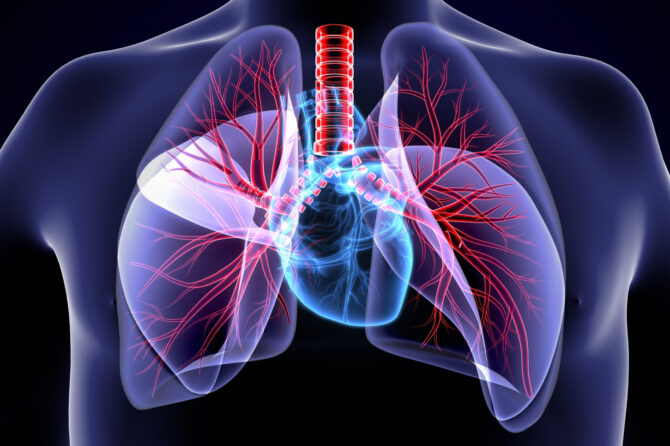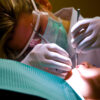
As fall settles into North Texas, cooler temperatures and damp weather create the perfect environment for mold to grow — on leaves, in soil, and even inside our homes. While most people experience little more than a stuffy nose from mold exposure, for some, it can trigger a serious lung condition known as Allergic Bronchopulmonary Aspergillosis (ABPA).
At North Texas Pulmonary Associates (NTLA), we help patients recognize and manage conditions like ABPA before they interfere with everyday life. Understanding this lesser-known allergic lung disease can make all the difference in protecting your breathing during the fall season. 🍂
🌿 What Is Allergic Bronchopulmonary Aspergillosis?
ABPA is an allergic reaction in the lungs caused by exposure to Aspergillus fumigatus — a common type of mold found both indoors and outdoors.
For people with asthma, cystic fibrosis, or weakened lung defenses, inhaling these spores can cause an exaggerated immune response. Instead of clearing the mold normally, the body’s immune system overreacts, leading to inflammation, mucus buildup, and sometimes even scarring in the lungs.
🦠 Why ABPA Is More Common in Fall
Fall weather is the perfect storm for ABPA triggers:
- Falling leaves and compost piles trap moisture and allow mold to thrive.
- Increased indoor time exposes you to mold growth in bathrooms, HVAC systems, and damp corners.
- Cool, humid air helps mold spores stay airborne longer — making it easier to breathe them in.
This means even short outdoor activities, like raking leaves or gardening, can increase your exposure if you’re sensitive.
💬 Common Symptoms of ABPA
Because ABPA overlaps with asthma and other lung diseases, it’s often overlooked. Look out for these warning signs, especially if symptoms seem worse during humid or cool months:
- Persistent cough with thick mucus
- Wheezing or shortness of breath
- Chest tightness or pain
- Fatigue or fever
- Coughing up brown or bloody mucus
- Worsening asthma symptoms despite usual treatment
If left untreated, repeated inflammation from ABPA can cause bronchiectasis, a condition that permanently widens and damages airways.
🩺 How Pulmonary Specialists Diagnose ABPA
At NTLA, our team uses specialized tests to identify ABPA and distinguish it from other lung conditions. Diagnostic tools may include:
- Blood tests to detect antibodies to Aspergillus
- CT scans to visualize inflammation or airway changes
- Sputum cultures to identify mold in mucus
- Pulmonary function tests (PFTs) to assess how well your lungs are working
Early diagnosis is key to preventing long-term lung damage and improving your quality of life.
💨 Treatment and Prevention Tips
Managing ABPA involves both reducing exposure to mold and controlling inflammation in the lungs. Treatment may include:
- Corticosteroids to reduce lung inflammation
- Antifungal medications to decrease mold growth
- Regular airway clearance techniques to help remove mucus
- Follow-up lung function tests to monitor improvement
To protect yourself this fall:
✅ Wear a mask when raking leaves or cleaning damp areas
✅ Use dehumidifiers in basements or bathrooms
✅ Replace HVAC filters regularly
✅ Avoid compost piles and dusty attics
✅ Keep indoor humidity below 50%
🌤️ Breathe Freely in Denton, Lewisville, Flower Mound & Frisco with NTLA This Fall
If you’re noticing more coughing, wheezing, or mucus this season — especially if you have asthma or chronic lung disease — it’s worth checking in with a pulmonary specialist.
At North Texas Pulmonary Associates, our compassionate lung experts help patients throughout the Dallas–Fort Worth Collin County, and Tarrant County area identify triggers, manage complex lung conditions like ABPA, and restore healthy breathing.
📞 Call NTLA today at (214) 774‑5130 or visit 👉 northtexaslungassociates.com/our-providers to schedule your appointment. Let’s work together to clear the air and protect your lung health this fall.









Are you searching for a real spell caster ?
ReplyIt is amazing how quickly Dr. Excellent brought my husband back to me.
My name is Heather Delaney. I married the love of my life Riley on 10/02/15 and we now have two beautiful girls Abby & Erin, who are conjoined twins, that were born 07/24/16. My husband left me and moved to be with another woman. I felt my life was over and my kids thought they would never see their father again. I tried to be strong just for the kids but I could not control the pains that tormented my heart, my heart was filled with sorrows and pains because I was really in love with my husband. I have tried many options but he did not come back, until i met a friend that directed me to Dr. Excellent a spell caster, who helped me to bring back my husband after 11hours. Me and my husband are living happily together again, This man is powerful, contact Dr. Excellent if you are passing through any difficulty in life or having troubles in your marriage or relationship, he is capable of making things right for you. Don't miss out on the opportunity to work with the best spell caster.
Here his contact. Call/WhatsApp him at: +2348084273514 "
Or email him at: Excellentspellcaster@gmail.com ,
For more information visit his website:https://drexcellentspellcaster.godaddysites.com
GET RICH WITH BLANK ATM CARD, Whatsapp: +19793621437
I want to testify about Dark Web blank atm cards which can withdraw money from any atm machines around the world. I was very poor before and have no job. I saw so many testimony about how Dark Web Online Hackers send them the atm blank card and use it to collect money in any atm machine and become rich {DARKWEBONLINEHACKERS@GMAIL.COM} I email them also and they sent me the blank atm card. I have use it to get 500,000 dollars. withdraw the maximum of 5,000 USD daily. Dark Web is giving out the card just to help the poor. Hack and take money directly from any atm machine vault with the use of atm programmed card which runs in automatic mode.
You can also contact them for the service below
* Western Union/MoneyGram Transfer
* Bank Transfer
* PayPal / Skrill Transfer
* Crypto Mining
* CashApp Transfer
* Bitcoin Loans
* Recover Stolen/Missing Crypto/Funds/Assets
Email: darkwebonlinehackers@gmail.com
WhatsApp: +19793621437
ReplyAre you searching for a real spell caster ?
ReplyIt is amazing how quickly Dr. Excellent brought my husband back to me.
My name is Heather Delaney. I married the love of my life Riley on 10/02/15 and we now have two beautiful girls Abby & Erin, who are conjoined twins, that were born 07/24/16. My husband left me and moved to be with another woman. I felt my life was over and my kids thought they would never see their father again. I tried to be strong just for the kids but I could not control the pains that tormented my heart, my heart was filled with sorrows and pains because I was really in love with my husband. I have tried many options but he did not come back, until i met a friend that directed me to Dr. Excellent a spell caster, who helped me to bring back my husband after 11hours. Me and my husband are living happily together again, This man is powerful, contact Dr. Excellent if you are passing through any difficulty in life or having troubles in your marriage or relationship, he is capable of making things right for you. Don't miss out on the opportunity to work with the best spell caster.
Here his contact. Call/WhatsApp him at: +2348084273514 "
Or email him at: Excellentspellcaster@gmail.com ,
For more information visit his website:https://drexcellentspellcaster.godaddysites.com
Are you searching for a real spell caster ?
ReplyIt is amazing how quickly Dr. Excellent brought my husband back to me.
My name is Heather Delaney. I married the love of my life Riley on 10/02/15 and we now have two beautiful girls Abby & Erin, who are conjoined twins, that were born 07/24/16. My husband left me and moved to be with another woman. I felt my life was over and my kids thought they would never see their father again. I tried to be strong just for the kids but I could not control the pains that tormented my heart, my heart was filled with sorrows and pains because I was really in love with my husband. I have tried many options but he did not come back, until i met a friend that directed me to Dr. Excellent a spell caster, who helped me to bring back my husband after 11hours. Me and my husband are living happily together again, This man is powerful, contact Dr. Excellent if you are passing through any difficulty in life or having troubles in your marriage or relationship, he is capable of making things right for you. Don't miss out on the opportunity to work with the best spell caster.
Here his contact. Call/WhatsApp him at: +2348084273514 "
Or email him at: Excellentspellcaster@gmail.com ,
For more information visit his website:https://drexcellentspellcaster.godaddysites.com